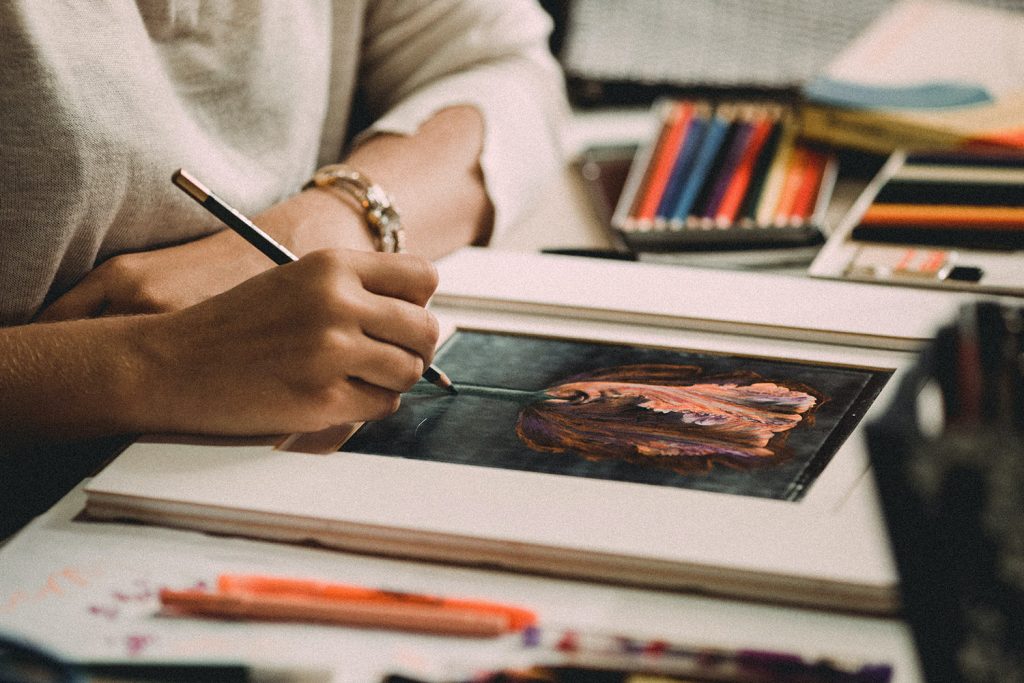“Less is bore.” Architect, Robert Venturi’s iconic quote summarises the essence of Postmodern architecture. It simultaneously expresses a distance from Modernism, which Ludwig Mies van Der Rohe framed as: “Less is More.” The complex style emerged in the 1960s and was popular throughout the last decades of the 20thcentury. Significant characteristics are sculptural forms, bright colours and distinct features such as tinted glass and ceramic tiles. Structures are playful and carry a sense of irony. Most importantly, buildings are ornamented and decorative elements are often reused from past architectural styles and periods. Here, we present a list of buildings that encapsulate the complexities of the movement.

Walt Disney Concert Hall, Los Angeles, USA | Frank Gehry, 2003
Frank Gerhy’s Walt Disney Concert Hall is one of the most sophisticated music venues in the world, solidifying itself as an internationally recognised architectural landmark. The original project was initiated by Lilian Disney, the widow of the animator Walt Disney. The construction began in 1992 and was halted between 1994 and 1996 due to the lack of funding. Gehry’s design for the structural skeletons required a computer software due to its mathematical complexity. Originally, this was intended to be covered with a stone finish, but after the success of his design for Guggenheim Bilbao, the structure was covered with matte-finished stainless steel. Inside, the venue incorporates two approaches of concert hall layouts. One, is the vineyard style such as the the Berliner Philharmonie by Hans Scharoun where the audience surrounds the stage, and the other classical shoebox design like the Vienna Musikverein by Theophil Hansen. The dynamic shapes of the building “symbolise musical movement and the motion of Los Angeles.”

National Gallery, Sainsbury Wing, London, UK | Denise Scott Brown, Robert Venturi, 1991
The National Gallery was designed by William Wilkins and finished in 1938. To extend the capacity of the site and house the continuously growing collection of Italian and Dutch masterpieces, a public competition for an extension was announced in the 1980s. After years of debate, the original winner, Ahrends Burton Koralek, was refused for his Hi-Tech scheme. This was also urged by the Prince of Wales, who in a speech at the 150th anniversary of the Royal Institute of British Architects said that ABK’s project was “like a monstrous carbuncle on the face of a much loved and elegant friend.” In 1985, Denise Scott Brown and Robert Venturi’s proposal was named as the successors. The Postmodern façade incorporates Corinthian nonstructural pilasters which correspond to the main building. Inside, visitors are met with a modest entrance area, an information desk and a glass-walled staircase leading the way to the works by Leonardo da Vinci, Botticelli, Piero della Francesca and other geniuses of the Italian Renaissance. Currently, the Sainsbury Wing and several display areas are closed, due to a renovation taking place. The reopening of the institution is scheduled for May 2025, with a plan by New York based firm Selldorf Architect.

Groninger Museum, Groningen, The Netherlands | Alessandro Mendini, Coop Himmelb(l)au, Michele de Lucchi and Philipe Starck, 1994
Groninger Museum is located on an artificial island, consisting of three large volumes, connected to land by passageways and plazas. Designer Alessandro Medini (1931-2019) invited guest architects to plan three individual pavilions creating a unique character to the site. The expressive structure is the result of an interplay between diverse materials, energetic forms and vivid colours. Mendini stated that everything had been done before and therefore various painting styles, such as Impressionism, Cubism and Futurism were a rich source of inspiration. “If there is no hierarchy in expressions of art and culture, the various disciplines and cultural expressions can easily be intermingled.” Such an example is Bauhaus master Walter Gropius’ door latch which was reproduced inside the building. Elsewhere, distinct surfaces including terrazzo floor tiles decorate the venue. The building which carries the key attributes of Postmodern architecture exhibits contemporary, international and local artists. In 2010, the information centre, lounge and restaurant were renovated based on the ideas of Maarten Baas, Studio Job and Jaime Hayon.

Neue Staatsgalerie, Stuttgart, Germany | James Stirling, Michael Wilford and Associates, 1984
In 1977, an international competition invited proposals for the extension of Stuttgart’s Staatsgalerie, which was originally built in 1843. James Stirling’s (1926-1992) winning project has since been claimed as one of the icons of Postmodernism. Architect Charles Jencks said that it “epitomised the first stage of Postmodernism in much the way the Villa Savoye and Barcelona Pavilion summarised early Modernism.” Significant details of the site are a central rotunda – a circular building which was prevalent in Classical and Neoclassical architecture – and a promenade, a walkway between the two parts of the venue. These elements both showcase a selection of styles. Stirling deliberately referenced well-known locations such as the Pantheon in Rome, Karl Friedrich Schinkel’s (1781-1841) Altes Museum in Berlin, Frank Lloyd Wright’s (1867-1959) Guggenheim in New York. The gallery’s travertine and sandstone materials and juxtaposed against pieces of vivid blue, green and pink industrial steel frames. The Staatsgalerie houses a collection of 20th century modern art, including works by Joan Miro, Joseph Beuys, Pablo Picasso and Oskar Schlemmer.

Vanna Venturi House, Philadelphia, USA | Robert Venturi, 1964
Regarded as one of the first buildings to carry the characteristics of the Postmodern style, the Vanna Venturi House, was designed by Robert Venturi (1925-2018) for his mother. The structure has details deriving from Modernism such as the horizontal ribbon windows and simple façade, but Venturi incorporated ornaments which were previously avoided by industry names such as Ludwig Mies van der Rohe and Frank Lloyd Wright. With the pitched roof and the centralised chimney, Venturi intentionally imitated “a child’s drawing of a house. ” In 1989, the design won the American Institute of Architects ‘ Twenty-Five Year Award. This is given to a single project that “stood the test of time for 25 to 35 years.” Because of its pioneer shapes fellow creative Peter Eisenman described it as “the first American building to propose an ideological break with Modern abstraction at the same time it is rooted in this tradition.”
Words: Fruzsina Vida
Image credits:
1.Stirling building, photo of roof
2. Walt Disney Concert Hall Building, Image: Adam Latham, courtesy Los Angeles Philharmonic Association
3. The Sainsbury Wing, Ground floor lobby with rustication. Image © Valentino Danilo Matteis
4. Groninger Museum Building
5. Stirling building, photo: Staatsgalerie Stuttgart
6. Groninger Museum Building Vanna Venturi House in Chestnut Hill, built in 1989 by architect Robert Venturi. Image © Steven Goldblatt




